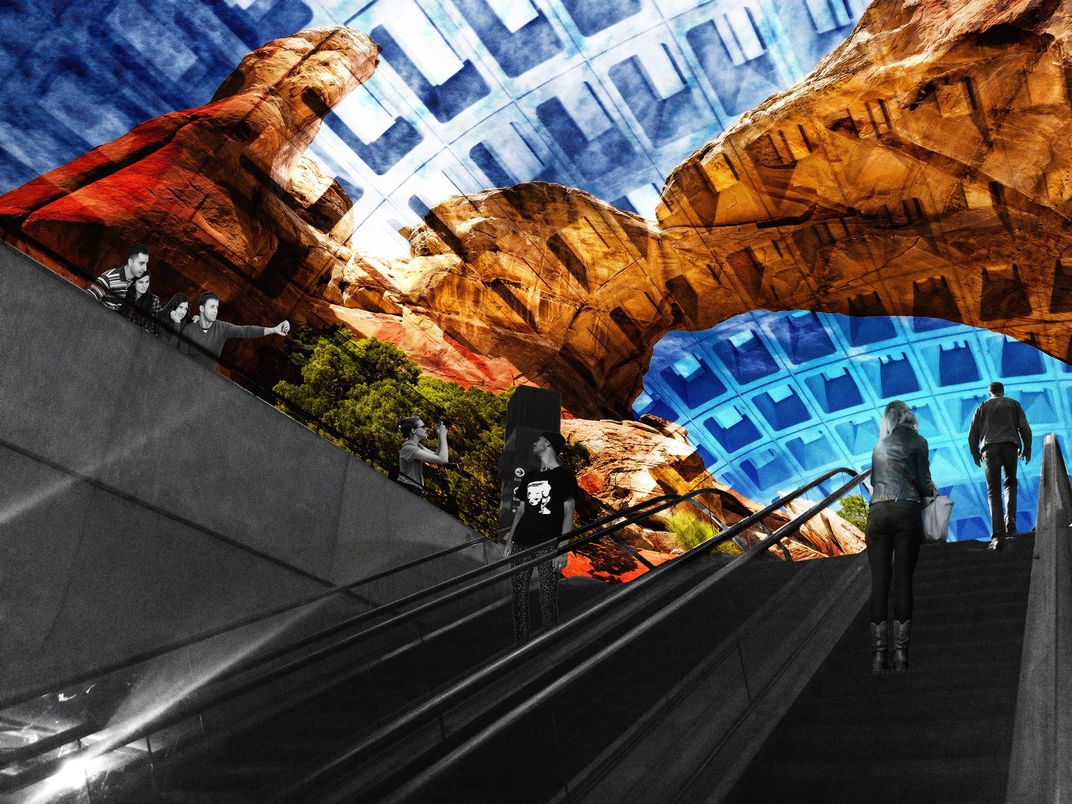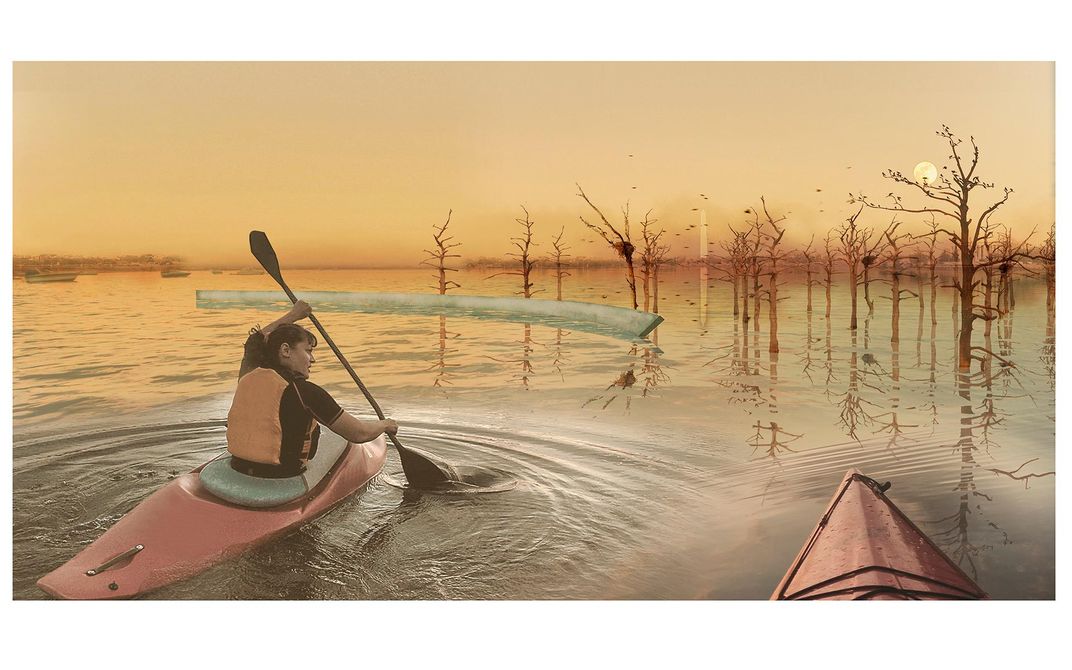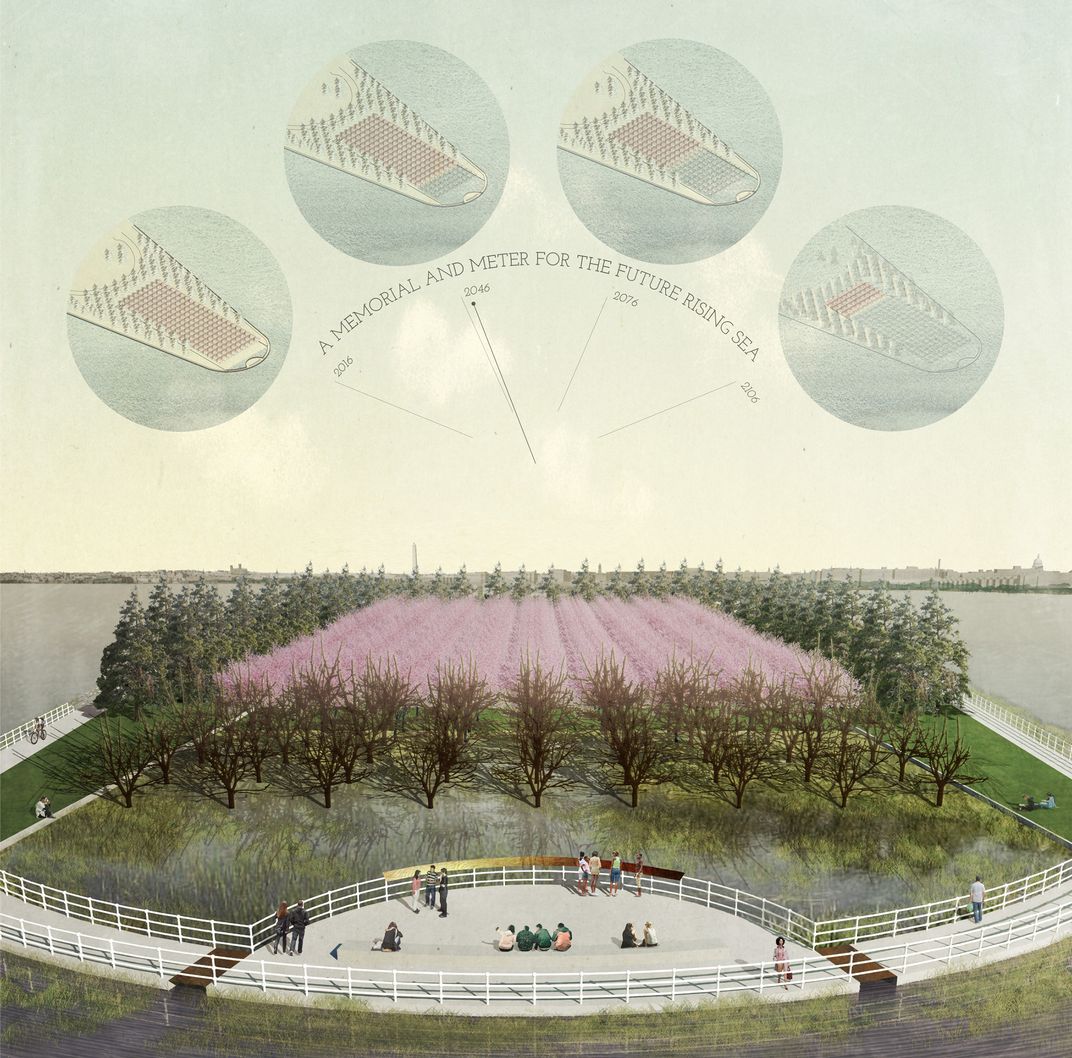What Will the Memorials of the Future Look Like?
From underwater trees to mechanical parrots, the memorials of tomorrow don’t look much like the ones that exist today
Take a walk through Washington, D.C., and you’ll find plenty of marble memorials rife with statues and staid plaques. But is that what the future of the memorial-rich city holds? If the winners of a new design competition have their way, probably not: As Jason Sayer reports for The Architect’s Newspaper, the memorials of tomorrow don’t bear much resemblance to the ones that can be found in the District today.
The winners of the Memorials for the Future design competition, co-sponsored by the National Park Service, National Capital Planning Commission and the Van Alen Institute, were recently announced. As Sayer reports, the six-month competition challenged participants to rethink memorials for Washington, D.C., and help spark ideas for new types of memorials around the U.S.
As Michelle Z. Donahue reported for Smithsonian.com earlier this summer, the competition invited submissions from teams throughout the world —89 teams total from eight countries—and garnered over 300 participants. Ultimately, 30 semifinalists were identified and just four finalists were selected by a jury of architects, planners, fine arts experts and Washington, D.C., stakeholders. Though the memorials selected won’t actually be built in the city, they were intended to spark discussion about how to think of memorials in a dramatically different future.
Climate Chronograph, the winning project by Team Azimuth Land Craft (San Francisco-based landscape architects Erik Jensen and Rebecca Sunter), dramatically departs from memorials as we know them. The project memorializes the bleak legacy of climate change by proposing a memorial at Hains Point, a spot nestled between the Potomac River and Washington Channel. Just 100 years ago, the manmade island was part of the river. It came into existance after the National Park Service decided to turn the confluence of the waters into a tidal basin to protect the nearby National Mall from floods.
Those floods are expected to come more and more often as the climate changes. Climate Chronograph will memorialize those changes by planting cherry trees as a kind of tidal gauge that can be used by future visitors to determine just how much water levels have risen. “Nature will write our story, our choices, into the landscape as we face this most vulnerable moment,” the team writes in its project brief.
The winning concept may be bleak, but the larger competition is anything but. Honorable mention projects include a project that unleashes mechanical parrots that fly over the Jefferson Memorial and collect and retell stories about monuments, a podcast platform that puts immigrant stories on public transportation, and an interactive memorial that brings national parks to the D.C. Metro. The competition also produced a report that points to ways America can better memorialize the things that matter—strategies that could help cities save money and space.
That’s good news, especially given that D.C.’s iconic Mall has been closed to new construction. The memorials of the future won’t just turn collective memories toward the stories of new phenomena and groups like climate change and immigrants. Rather, it seems that they’ll make use of space in new, creative ways—no marble needed.
/https://tf-cmsv2-smithsonianmag-media.s3.amazonaws.com/accounts/headshot/erin.png)







/https://tf-cmsv2-smithsonianmag-media.s3.amazonaws.com/accounts/headshot/erin.png)